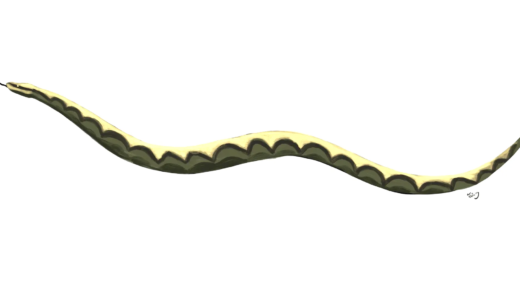Shark teeth collecting offers insights into evolution, personal stories from passionate collectors, and a vibrant community. Collectors explore diverse shark teeth types and share experiences, building connections through clubs and events.
Types of Shark Teeth: Discovering the Varieties
Shark teeth collecting is a thrilling hobby that captivates enthusiasts of all ages. Among the many aspects of this fascinating pursuit, understanding shark teeth types is fundamental. Shark teeth vary widely in size, shape, and purpose, reflecting the diverse diets and habitats of different shark species. Here are some notable types:
- Great White Shark Teeth: Triangular and serrated, these teeth are designed for cutting through flesh.
- Tiger Shark Teeth: These teeth are broad and have a unique shape, ideal for crushing prey.
- Hammerhead Shark Teeth: Characterized by a thin, elongated shape, suitable for catching slippery fish.
- Whale Shark Teeth: Interestingly, they are very small and not used for feeding, as these sharks are filter feeders.
Each type of shark tooth tells a story about its owner. Collectors often seek specific varieties based on their personal interests or the rarity of the specimens. Understanding these types enhances the excitement of finding and collecting shark teeth.
Finding Shark Teeth: Best Locations and Tips
Finding shark teeth can be an exhilarating experience, particularly when you know where to look. Coastal areas are prime hunting grounds, especially following storms that wash up treasures from the ocean floor. Here are some tips for successful shark tooth hunting:
- Beach Locations: Look along sandy beaches, particularly in places known for fossilized remains.
- Riverbanks: Many sharks inhabit rivers, so searching along riverbanks can yield surprising finds.
- Shark Tooth Festivals: Attend local festivals where enthusiasts gather; they often share tips and locations.
- Timing: Early mornings after high tides or storms are the best times to search.
By exploring these recommended locations and using effective techniques, collectors can significantly enhance their chances of uncovering rare shark teeth.
Shark Teeth Identification Techniques: How to Tell Them Apart
Identifying shark teeth can be a challenge, but with practice, collectors can become adept at distinguishing between different types. Here are some techniques to improve your identification skills:
- Shape Recognition: Notice the shape variations; for instance, triangular teeth belong to predatory sharks.
- Size Comparison: Compare the size of teeth; larger teeth often indicate larger shark species.
- Texture Examination: Examine the texture and color, as these can vary widely among species.
- Resource Guides: Utilize field guides and online resources dedicated to shark teeth identification.
Using these identification techniques, collectors can gain a deeper appreciation for their finds, enhancing their overall experience in the world of shark teeth collecting.
Preserving Shark Teeth: Keeping Your Collection Safe
Preserving shark teeth is crucial for collectors who want to maintain the integrity and beauty of their specimens. Proper preservation ensures that these fascinating pieces of natural history remain intact for years to come. Here are effective methods for preserving shark teeth:
- Cleaning: Gently clean the teeth using a soft brush and mild soap to remove dirt and debris. Avoid harsh chemicals that can damage the enamel.
- Drying: Ensure teeth are thoroughly dried after cleaning to prevent mold growth. Use a soft cloth to pat them dry.
- Display Cases: Use UV-protective display cases to shield teeth from sunlight and dust. This prevents discoloration and degradation over time.
- Humidity Control: Store teeth in a controlled environment with low humidity to prevent moisture damage. Silica gel packets can help absorb excess moisture.
- Labeling: Keep detailed records of each tooth, including species, location found, and date. This adds value and helps in identification.
By following these preservation methods, collectors can enjoy their shark teeth collections while ensuring they remain in excellent condition for future generations.
The History of Shark Teeth: A Glimpse into the Past
The history of shark teeth is as captivating as the creatures themselves. These ancient remnants provide insights into the evolutionary journey of sharks over millions of years. Fossilized shark teeth are often found in sedimentary rock layers, allowing scientists to study their age and environmental conditions. Here are key points about the historical significance of shark teeth:
- Fossil Record: Shark teeth are one of the most abundant fossils due to their durability, offering a glimpse into prehistoric marine ecosystems.
- Evolutionary Insights: The size and shape of teeth help researchers understand shark evolution and their adaptation to various diets.
- Cultural Significance: Throughout history, shark teeth have been used in tools, jewelry, and even as currency in some cultures, showcasing their value beyond mere collectibles.
- Educational Value: Studying shark teeth can inform conservation efforts and enhance understanding of modern shark species.
Shark teeth not only serve as fascinating collectibles but also as vital links to our planet’s biological history, highlighting the resilience and adaptability of these remarkable creatures.
Why Collect Shark Teeth? The Joy of This Hobby
Collecting shark teeth is a rewarding hobby that combines adventure, education, and personal satisfaction. Here are compelling reasons why many enthusiasts are drawn to this unique pursuit:
- Connection to Nature: Finding shark teeth connects collectors to the ocean and its ecosystems, fostering a deeper appreciation for marine life.
- Thrill of Discovery: The excitement of uncovering a rare or unique tooth is exhilarating. Each find tells a story, adding to the collector’s journey.
- Community Engagement: Joining local shark tooth collecting groups or participating in festivals allows enthusiasts to share knowledge, tips, and experiences.
- Personal Growth: Collecting promotes patience, attention to detail, and the joy of learning about different species and their histories.
- Display and Sharing: Showcasing collections at home or in community exhibits can spark conversations and educate others about sharks and conservation.
Ultimately, shark teeth collecting is more than just a hobby; it’s a way to connect with the past, engage with nature, and share a passion with others.
Shark Teeth and Evolution: What They Reveal About Sharks
Shark teeth are not just fascinating collectibles; they also provide critical insights into the evolutionary journey of sharks. Over millions of years, sharks have adapted to their environments, and their teeth reflect these changes. For example, the evolution of tooth shape corresponds directly to dietary needs:
- Flat Teeth: Species like the whale shark have flat teeth, designed for filter feeding on plankton.
- Serrated Teeth: Predatory sharks, such as the Great White, possess serrated edges for slicing through flesh.
- Specialized Teeth: Some sharks, like the hammerhead, have unique teeth shapes to catch specific prey, indicating their hunting strategies.
By studying these teeth, researchers can track changes in shark populations and their responses to environmental shifts. Shark teeth serve as a historical record, revealing how these creatures have survived and thrived in various marine ecosystems.
Personal Stories from Collectors: Unique Experiences and Anecdotes
Shark teeth collecting is not only about the teeth themselves but also about the stories behind them. Many collectors have unique experiences that highlight their passion:
- First Find: One collector recalls the thrill of finding their first tooth on a beach in Florida, a moment that sparked a lifelong obsession.
- Family Traditions: Some families make it a tradition to hunt for shark teeth during summer vacations, bonding over their shared discoveries.
- Rare Discoveries: Another collector shared an exciting tale of finding a rare megalodon tooth, which became the centerpiece of their collection.
These personal anecdotes not only illustrate the joy of the hunt but also the connections formed between collectors, their families, and nature. Each tooth carries a memory, making the collection more than just an assembly of objects; it becomes a narrative of adventure and passion.
The Community of Shark Tooth Collectors: Building Connections
The world of shark teeth collecting is vibrant and welcoming. Collectors often find themselves part of a community that shares a love for these ancient treasures. Joining local groups or participating in events fosters connections and knowledge exchange:
- Local Clubs: Many regions have shark tooth clubs where enthusiasts meet, share finds, and learn from each other.
- Online Forums: Social media platforms host groups dedicated to shark teeth, where members can post pictures, seek identification help, and discuss their latest finds.
- Festivals and Events: Shark tooth festivals provide opportunities for collectors to gather, trade, and showcase their collections, enhancing community spirit.
These connections enrich the collecting experience, transforming it from a solitary pursuit into a shared passion that spans generations and locations. The community aspect adds depth to the hobby, making it more enjoyable and fulfilling.





Comments are closed.